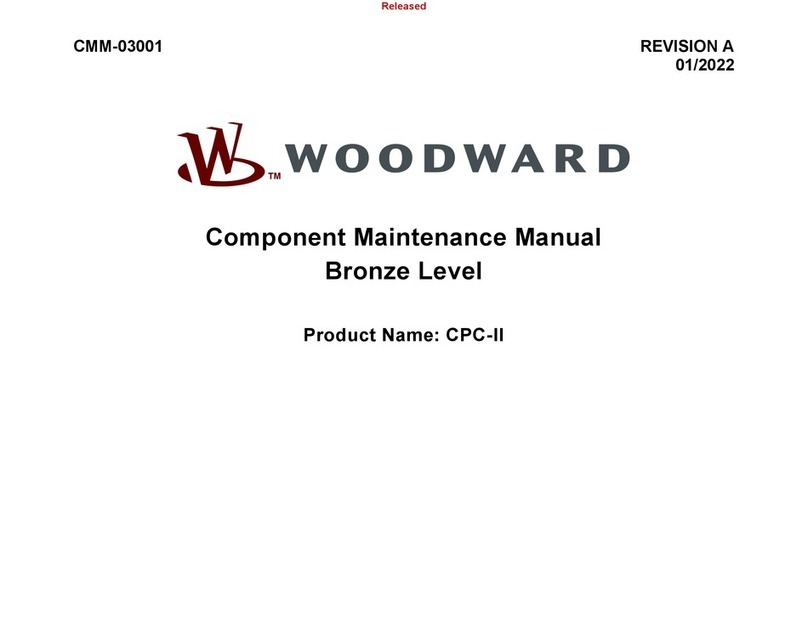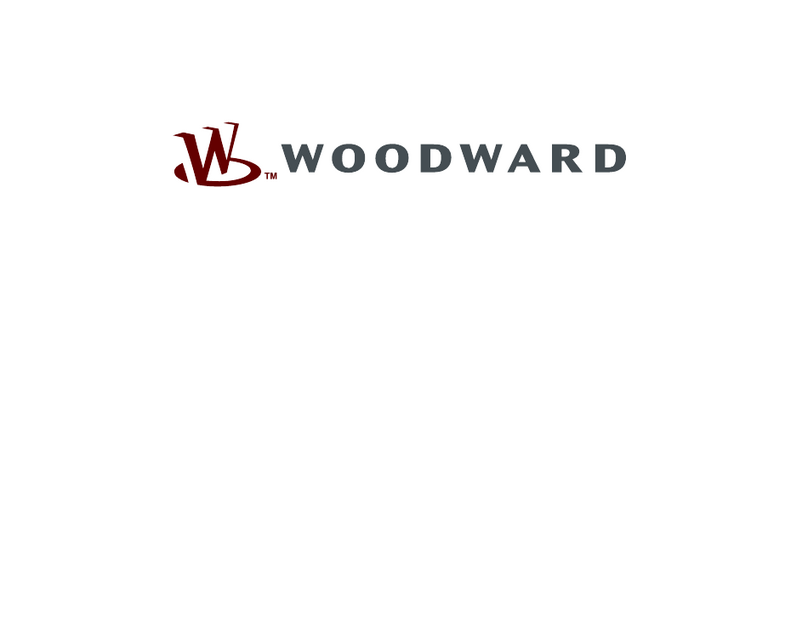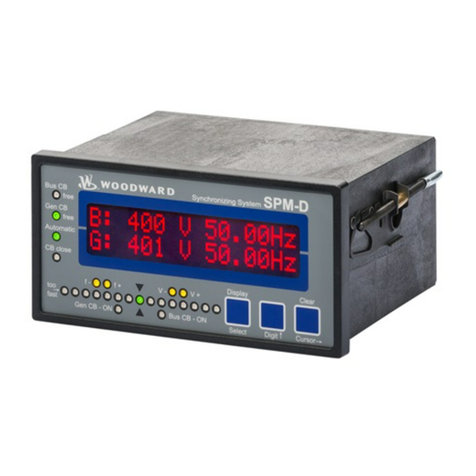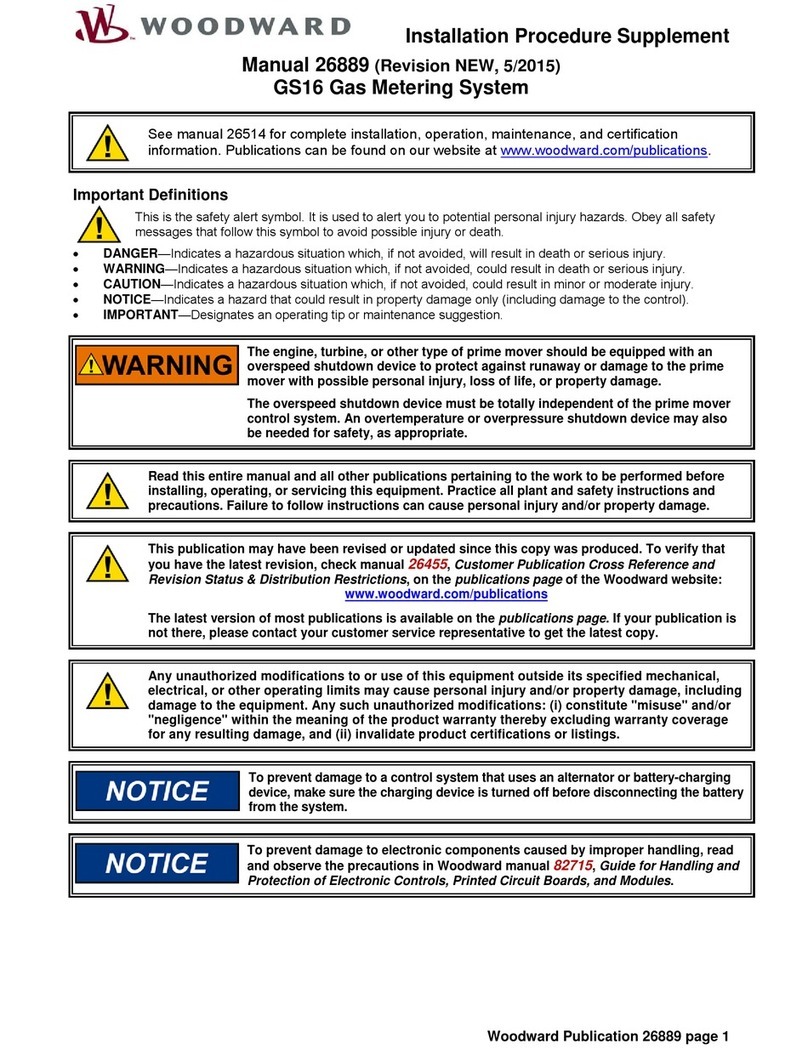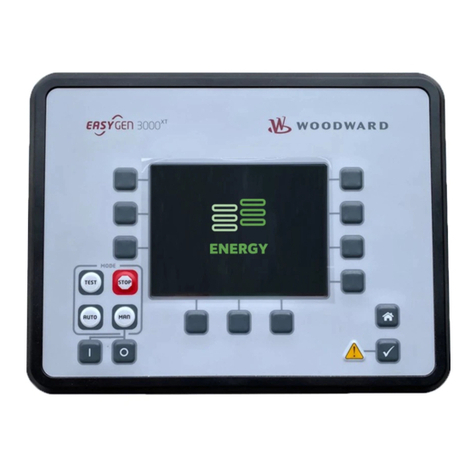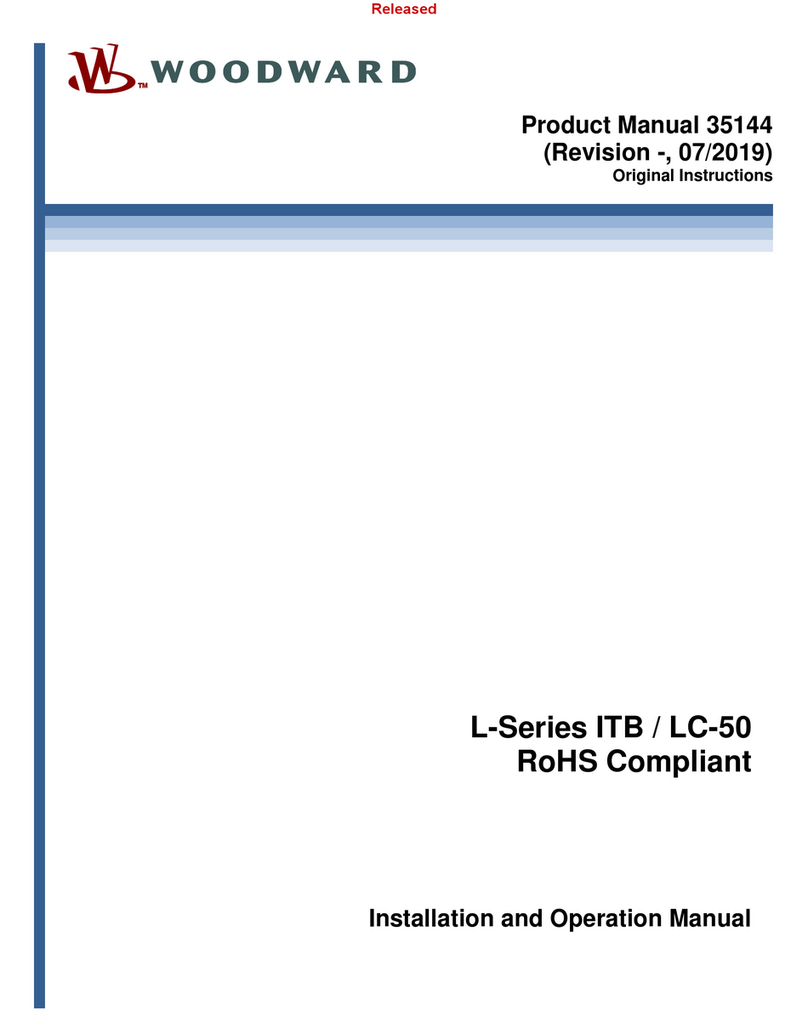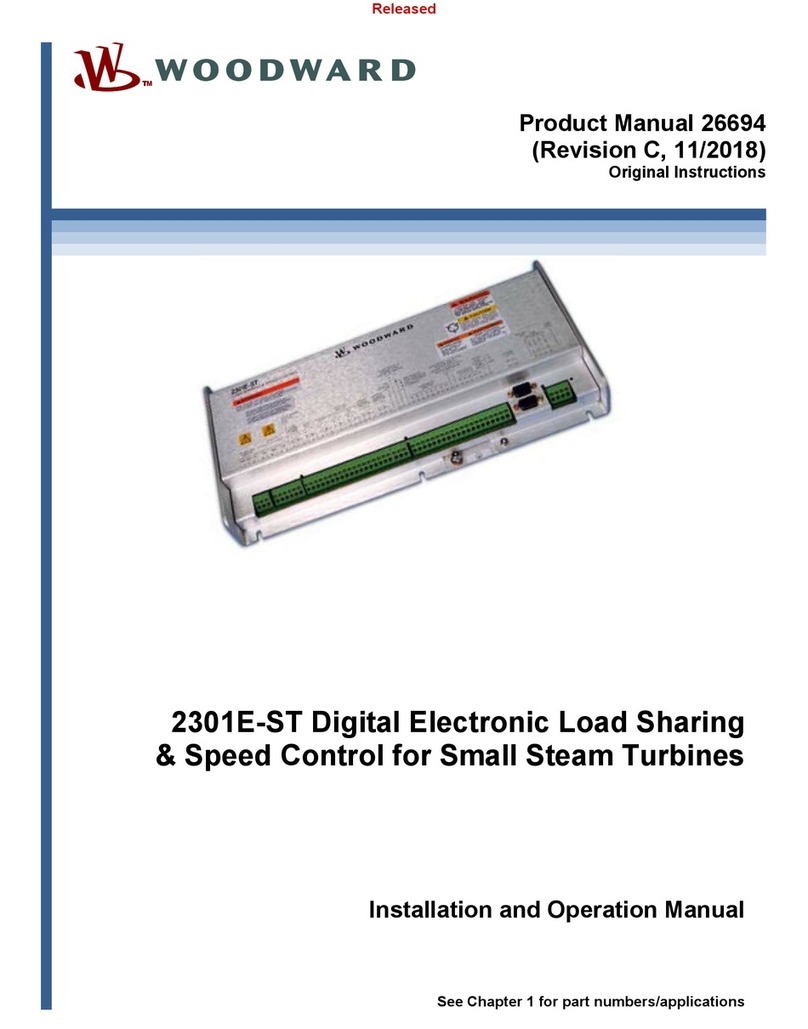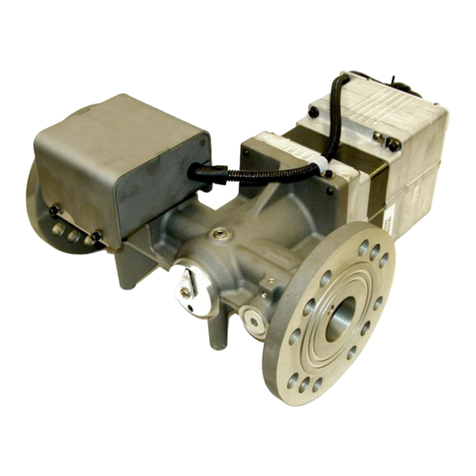
Manual 26758 CPC-DX Current to Pressure Converter
Woodward 2
Illustrations and Tables
Figure 1-1. Basic CPC-DX Application and Configuration............................................................................ 8
Figure 1-2. CPC-DX Main Components........................................................................................................ 9
Figure 1-3. CPC-DX Installation Drawing Front view.................................................................................. 10
Figure 1-4. CPC-DX Installation Drawing, Top view................................................................................... 11
Figure 1-5. CPC-DX customer interface ..................................................................................................... 12
Figure 1-6. CPC-DX Main Terminal Box, Wiring Diagram.......................................................................... 13
Figure 1-7. CPC-DX Main Terminal Block Connections List ...................................................................... 14
Figure 1-8. Internal CPC wiring diagram..................................................................................................... 15
Figure 2-1. Internal Leakage, CPC-DX Skid, 10 bar supply pressure, oil viscosity 20 cSt; ....................... 18
Figure 2-2. Internal Leakage, CPC-DX Skid, 25 bar supply pressure, oil viscosity 20 cSt; ....................... 18
Figure 3-1. CPC-DX Lifting eyebolt location. .............................................................................................. 20
Figure 3-2. Power Supply Input Connections ............................................................................................. 22
Figure 3-3. Wiring Connections for Master Designation ............................................................................. 23
Figure 3-4. PE ground connection localization and details......................................................................... 24
Figure 4-1. Isolation Valve OPEN / CLOSED Lever Position ..................................................................... 27
Figure 4-2. CPC-DX Unit with All Isolation Valves in CLOSED Position.................................................... 28
Figure 4-3. CPC-DX Unit CPC-II Unit #1 with Supply and Control Isolation Valves in Open Position....... 29
Figure 4-4. CPC-DX Unit With All Isolation Valves in OPEN Position........................................................ 30
Figure 4-5. CPC-DX Skid with CPC-II Unit #1 Control Isolation Valve in CLOSED Position ..................... 30
Figure 4-6. CPC-DX Status Link Disconnection Inside Main Terminal Box ............................................... 31
Figure 4-7. CPC-DX Unit to Unit Control Switchover – Switchover Action Typical Performance............... 32
Figure 4-8. CPC-DX Unit Control Takeover (Second Unit Shutdown Simulation)...................................... 33
Figure 4-9. CPC-DX Skid Pressure between CPC-II Units (Pressure Offset) at 20 cSt Oil Viscosity ........ 34
Figure 4-10. Tuning Runs Showing the Effect of Adjusted Primary Gain Example Parameter Values...... 35
Figure 4-11. Tuning Runs Showing the Effect of Adjusted Proportional Trim Example Parameter Values36
Figure 4-13. 38
Figure 4-14. Low LLC Parameter – Sluggish Response, Visible Controlled Unit Position Variation, and
Unit-To-Unit Performance Difference..................................................................................... 39
Figure 4-15. Low LLC Parameter – Slightly Sluggish Response, Still Visible Controlled Unit Position
Variation, and Unit To Unit Performance Difference.............................................................. 39
Figure 4-16. High LLC Parameter – Visible Controlled Unit Position Overshoot, Acceptable Unit-To-Unit
Performance Difference ......................................................................................................... 40
Figure 4-17. Pressure Gauge Untightening from Manifold ......................................................................... 40
Figure 4-18. Pressure Gauge Untightening From Adapter ......................................................................... 41
Table 1-1. Terms and Definitions.................................................................................................................. 7
Table 1-2. Woodward Reference Literature.................................................................................................. 7
Table 2-1. Environmental ............................................................................................................................ 16
Table 2-2. Physical...................................................................................................................................... 16
Table 2-3. Electrical .................................................................................................................................... 16
Table 2-4. Hydraulic .................................................................................................................................... 16
Table 2-5. CPC-DX Maximum Input/Supply Pressure................................................................................ 17
Table 2-6. Hydraulic parameters................................................................................................................. 17
Table 3-1. Fuse/Breaker Requirements...................................................................................................... 22
Table 5-1. List of available Replacement Kits............................................................................................. 42
Table 5-2. Troubleshooting ......................................................................................................................... 43
